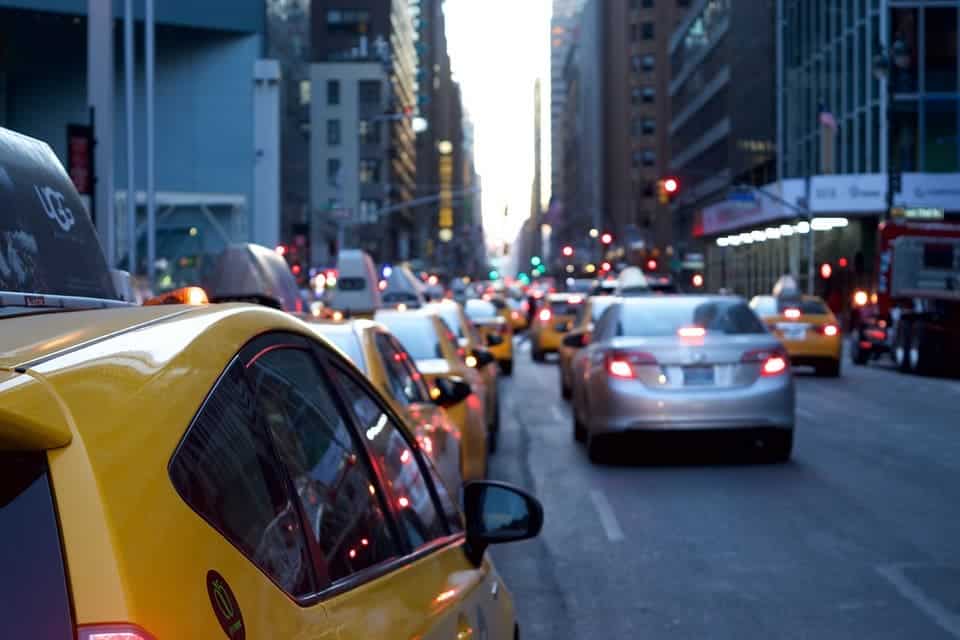Traffic-associated pollution leads to roughly 4 million cases of asthma in children worldwide each year, a new study reports.
The team looked at 125 cities around the world, keeping track of the nitrogen oxide (NO2) levels in their air, and how it related to new pediatric cases of asthma. The study, based on data from 2010 to 2015, estimates that 4 million children worldwide develop asthma each year due to NO2, with 64% of these new cases occurring in urban areas.
The gas accounted for anywhere between 6% (Orlu, Nigeria) to 48% (Shanghai, China) of these cases, the authors report. Overall, NO2’s contribution to new cases of pediatric asthma exceeded 20% in 92 cities, they add, in both developed and emerging economies.
Bad air
“Our findings suggest that millions of new cases of pediatric asthma could be prevented in cities around the world by reducing air pollution,” said Susan C. Anenberg, PhD, an associate professor of environmental and occupational health at Milken Institute SPH, and the study’s senior author.
“Improving access to cleaner forms of transportation, like electrified public transport and active commuting by cycling and walking, would not only bring down NO2 levels, but would also reduce asthma, enhance physical fitness, and cut greenhouse gas emissions.”
Asthma is a chronic disease that involves inflammation of the lung’s airways, making it hard (sometimes impossible) to breathe. It is estimated that 235 million people worldwide currently have asthma, varying in intensity from wheezing to life-threatening attacks. This study is the first to take a look at how traffic-related nitrogen dioxide fits into the asthma picture. The work relied on a method that takes into account high exposures to NO2 that occur near busy roads, Anenberg explains.
For the study, the team linked together global datasets of NO2 concentrations, population distributions, and asthma incidence rates with epidemiological evidence relating traffic-derived NO2 pollution with asthma development in kids. This wealth of data allowed the team to estimate how many new cases of pediatric asthma are attributable to NO2 pollution in the 194 countries and 125 major cities they studied.
Here are some key takeaways:
- Roughly 4 million children developed asthma, each year, from 2010 to 2015 due to NO2 pollution (primarily from motor vehicle exhaust).
- NO2 accounted for between 6% to 48% of pediatric asthma incidence. Its contribution exceeded 20% in 92 cities located in developed and emerging economies.
- The ten highest NO2 contributions were estimated for eight cities in China (37 to 48% of pediatric asthma incidence) followed by Moscow, Russia and Seoul, South Korea, both at 40%.
- In the US, the top-five most affected cities (as judged by percentage of pediatric asthma cases linked to polluted air) are Los Angeles, New York, Chicago, Las Vegas, and Milwaukee
- China had the largest national health burden associated with air pollution at 760,000 cases of asthma per year, followed by India at 350,000, and the United States at 240,000.
- In general, cities with high NO2 concentrations also had high levels of greenhouse gas emissions.
The World Health Organization (WHO) has set Air Quality Guidelines for NO2 and other air pollutants. For NO2, that guideline pins about 21 parts per billion for annual average levels as being safe. The researchers estimate that most children live in areas that conform to this guideline, but say that 92% of new pediatric asthma cases attributable to NO2 sprung up in areas that met the WHO guidelines.
“That finding suggests that the WHO guideline for NO2 may need to be re-evaluated to make sure it is sufficiently protective of children’s health,” said Pattanun Achakulwisut, PhD, lead author of the paper and a postdoctoral scientist at Milken Institute SPH.
The team, however, is confident that we can do better. Many of the solutions aimed at scrubbing cities of the greenhouse gases in their air would also reduce NO2 levels, thus helping prevent new cases of asthma.
The paper “Global, national, and urban burdens of paediatric asthma incidence attributable to ambient NO2 pollution: estimates from global datasets” has been published in The Lancet Planetary Health journal.










